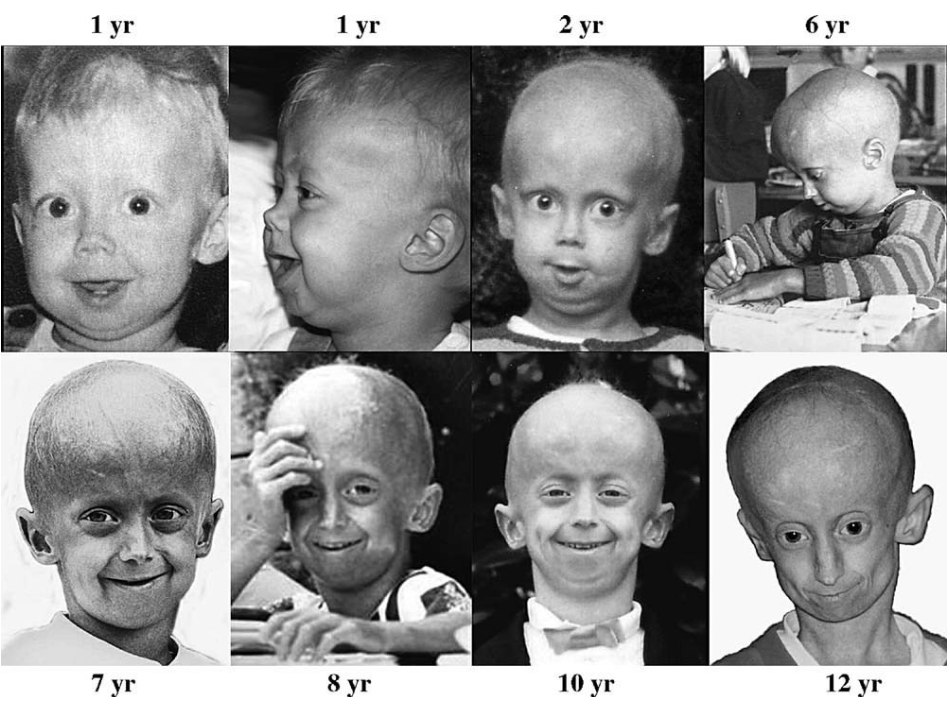By Anatole Tahintzi, Year 12
Progeria, also called Hutchinson-Gilford Progeria Syndrome (HGPS), is an extremely rare genetic disorder, affecting approximately 1 in 4 million newborns worldwide, that causes rapid ageing in children. Symptoms of the disease usually appear in the first year of life and include slowed growth and development, loss of body fat and hair, aged-looking skin, joint stiffness, hip dislocation, and cardiovascular problems. Children with Progeria typically have a life expectancy of around 14 years and often die from heart disease at a young age.
The disease is caused by a mutation in the LMNA gene, which produces a protein called lamin A. Lamin A helps to maintain the shape of the nucleus in cells. In people with Progeria, the mutation in the LMNA gene leads to the production of an abnormal form of lamin A, called progerin, which builds up in the nucleus of cells and causes them to prematurely age.

To make lamin A, the cell first makes a similar protein called prelamin A. To turn prelamin A into lamin A, it is methylated at the Carbon terminus, then trimmed and modified in a few more steps. Finally, Zmpste24 protease cuts off the tail and mature lamin A protein is obtained(see figure A). At times, there’s a mistake in the instructions for making prelamin A because of a mutation in the LMNA gene. This causes the Zmpste24 protease to miss the tail when it tries to cut it off, leaving an abnormal form of prelamin A called progerin(see figure B). Because progerin doesn’t get fully processed like regular prelamin A, it builds up in cells and can cause problems(see figure C). When cells have too much progerin, they start to behave differently and can develop abnormalities like the ones seen in Hutchinson-Gilford Progeria Syndrome (HGPS).
Currently, there is no cure for Progeria. Treatment is focused on managing symptoms and complications, such as heart disease and joint problems. Clinical trials of drugs that target progerin are underway, and may offer hope for new treatments in the future. Children with Progeria face many challenges, including physical and emotional hardships. They often experience social isolation and bullying due to their appearance. However, organisations such as the Progeria Research Foundation provide support and resources for families affected by Progeria. Despite the challenges of Progeria, there are inspiring stories of individuals who have defied the odds and lived longer than expected. Tiffany Wedekind from Columbus, Ohio is believed to be the oldest survivor of Progeria at 44 years old.
In recent years, researchers have made strides in understanding the genetics and cellular mechanisms of Progeria. Oxford University researchers have developed a computer program(shown in the gif below) that can recognise facial features in photographs and identify possible matches with conditions such as Progeria. This technology has the potential to improve early diagnosis and treatment for those affected by Progeria and other rare diseases.
In conclusion, Progeria is a rare genetic disorder that causes premature ageing in children. While there is no cure for Progeria, ongoing research and clinical trials offer hope for new treatments and a better understanding of this devastating disease. Organisations such as the Progeria Research Foundation provide support and resources for families affected by Progeria. With continued research and advocacy, we can work towards improving the lives of those affected by Progeria and finding a cure for this rare disease.



